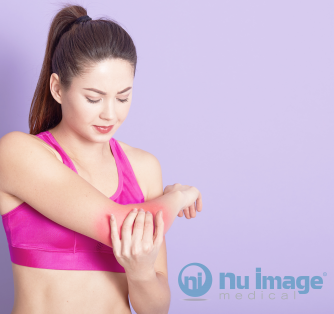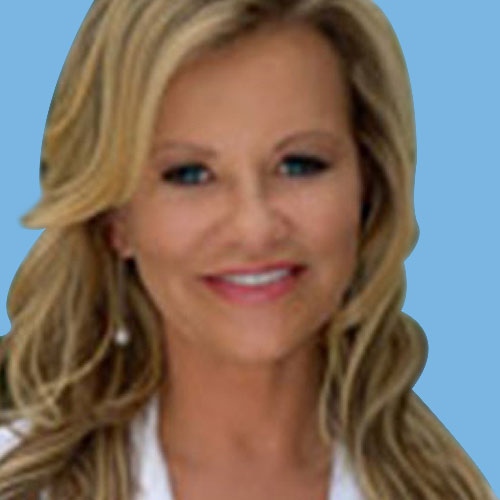Menu
Weight loss
Hormones
Sex
EXPLORE
MEET NU IMAGE MEDICAL
TREATMENTS
MEET NU IMAGE MEDICAL
TREATMENTS
MEET NU IMAGE MEDICAL
6 Ways To Treat Sore Muscles | Nu Image Medical®


Did you workout yesterday, and today your muscles are screaming? You probably have Delayed Onset Muscle Soreness (DOMS), which is not such a bad thing.
The aching in your muscles is a sign of damaged muscle tissues. When this damage occurs, your body starts repairing the tears by triggering inflammation on the injured part. There’s fluid accumulation on the muscles that put pressure on the injury giving you the feeling of tightness and pain.
Repaired muscles end up being stronger and bigger. Sore muscles are common, and almost everyone has experienced them at some point.
Common Causes Of Sore Muscles
Most sore muscles result from extreme tension or physical activity. Some of the most common causes include:
- Engaging in an extreme workout you are not used to
- Not doing warmups and cooldowns
- Muscle injury during demanding physical activity or work
Some medical conditions can also cause muscle aches. They include:
- Chronic fatigue syndrome
- The use of statins, cocaine, ACE inhibitors, and other drugs and medications
- Auto-immune disorders such as polymyositis and lupus
- Bacterial infections, polio, flu
- Medical conditions that cause inflammation of the muscles, such as myofascial pain syndrome
- Hyperthyroidism and hypothyroidism
Ways To Treat Sore Muscles
There is no instant solution to muscle aches. Your muscles need time to heal. However, you can apply these strategies to help your muscles recover faster and ease the pain.
Prioritize Warmups and Cool Downs
Before and after engaging in a workout or physical activity, stretch your muscles and do warmups. They increase the blood flow to your muscles. Consider doing light exercises such as rope skipping, jogging, riding, or light weight-lifting.
Stay Hydrated
You may already be aware of this but staying hydrated is an essential part of muscle recovery. Make sure you are hydrated during and after your workout.
Water ensures fluids are moving throughout your body and helps remove waste products, ease inflammation, and transport nutrients to where they are needed in the muscles.
Hot and Cold Therapy After Exercising
Cold therapy after a workout helps reduce swelling and pain on the muscles and joints. You can apply ice or a bag of frozen vegetables to the affected area or soak in a cold bath.
Remember not to apply ice directly on the skin. Use cold therapy for 1-3 days after the workout, then switch to heat therapy. Heat therapy after the exercise can help reduce DOMS. You can opt for either dry or moist heat. However, moist heat has given better results in pain reduction. You can make a heating pad at home, soak in a warm bath, or use a warm, damp towel.
Use A Foam Roller
According to the International Journal of Sports Physical Therapy, foam rolling can help reduce DOMS. Like other massage types, it improves blood circulation, which delivers more nutrients and oxygen to the affected muscles. This reduces tenderness, swelling, and, consequently, pain. It also helps to move the fluids that accumulate in the muscles after intensive workouts.
A softer foam roller is recommended for starters as it will apply less pressure than a firmer one and thus are less intense.
Light Exercise
Exercising to ease sore muscles that result from exercises in the first place sounds like a bad idea. But, far from it, light exercises help move blood to the affected muscles. You want to avoid intense workout on the same set of muscles for consecutive days, but complete immobilization is not the best.
You can get some light movements through cycling, walking, swimming, or even yoga. This way, your muscles will get oxygen and nutrients without damaging any more tissues.
Get Some Sleep
Protein synthesis helps repair damaged muscles and tissue. If you ingest protein before sleep, it’s digested and absorbed in the body when you sleep. This increases the rate of muscle protein synthesis, helping you recover faster. At least seven hours of overnight sleep will help you repair the damaged muscles.
You can do other things to ease sore muscles, including taking proteins, anti-inflammatory foods, and antioxidant supplements, soaking in a hot Epsom salt bath and massaging the affected areas.
You Can Avoid Sore Muscles Brought On By Working Out
Sermorelin For Bodybuilding
If you’re constantly worried about muscle aches, you can try a different approach to building muscles and keeping fit. A growth hormone-releasing substance like sermorelin will help grow your muscles without suffering from sore muscles.
As you grow older, your body loses the ability to produce more growth hormones and becomes harder to grow muscles. Sermorelin stimulates the pituitary gland to produce growth hormones, encouraging the growth of new muscle and tissue.
You don’t risk damaging any muscle or tearing tissues as there’s no physical activity involved, thus no muscle aches. You can use sermorelin for bodybuilding, to boost your brain health, reduce fat levels, increase cognitive effects, treat insomnia, among other uses.
Sore muscles are normal, especially if you’ve not exercised for long or you’re active. However, pain is not a measure of how fit you are, and you should discontinue the exercise if your muscles start hurting. Alternatively, you can go for a safer way to build your muscles that won’t leave them sore. Get Sermorelin treatment from Nu Image Medical and speed up your muscle growth. Join now and start your fitness journey.
Nu Image Medical® offers a new and futuristic approach to achieving optimal health and wellness. The company has been a weight loss, anti-aging and wellness provider since 2004 and offers medically supervised programs for medical weight loss, peptides, erectile dysfunction, scream cream, and hair loss (NuDew)
This article is for informational purposes only and does not constitute medical advice. The information contained herein is not a substitute for and should never be relied upon for professional medical advice. Always talk to your physician about the risks and benefits of any treatment. Nu Image Medical may not offer the medications or services mentioned in this article.
